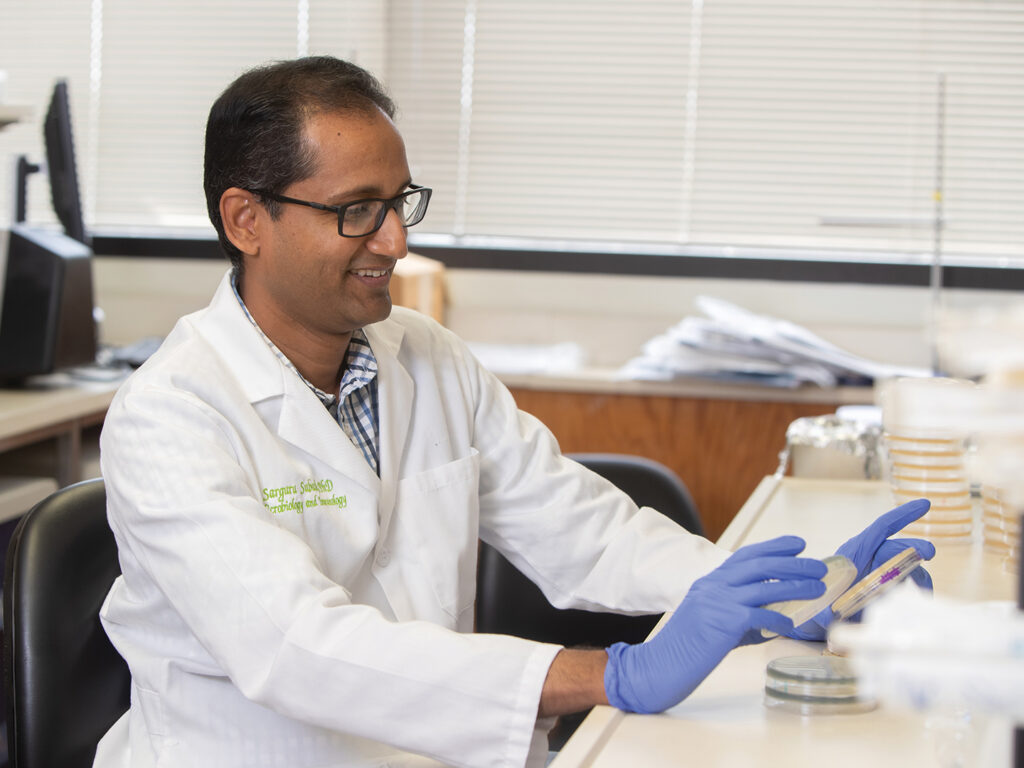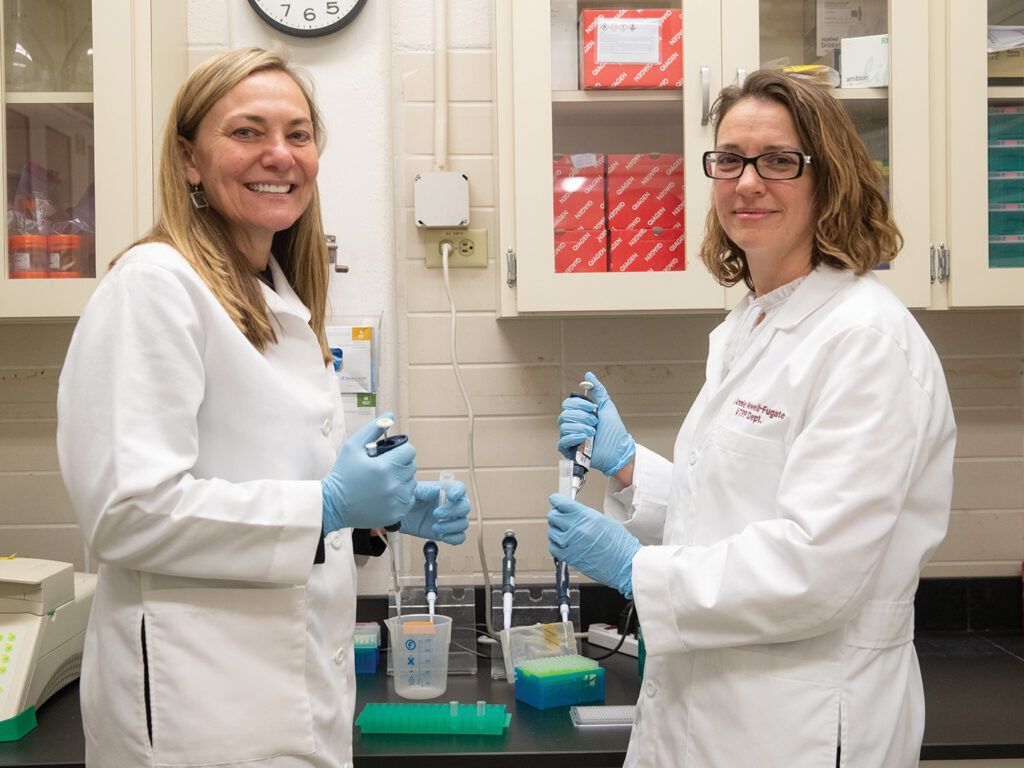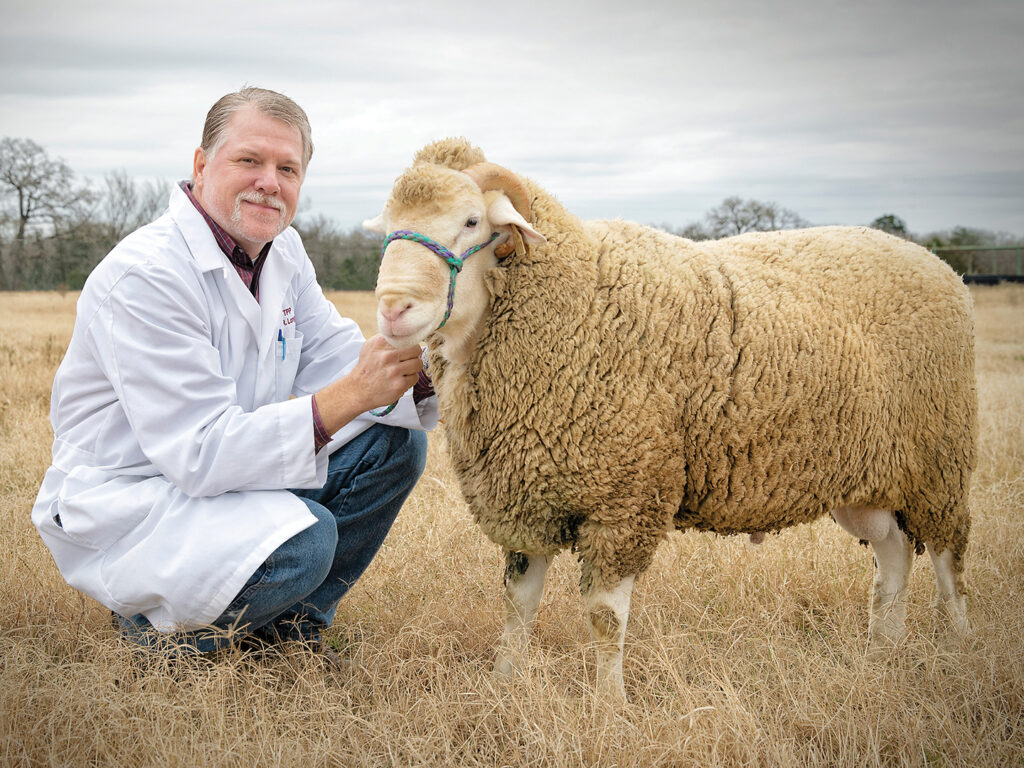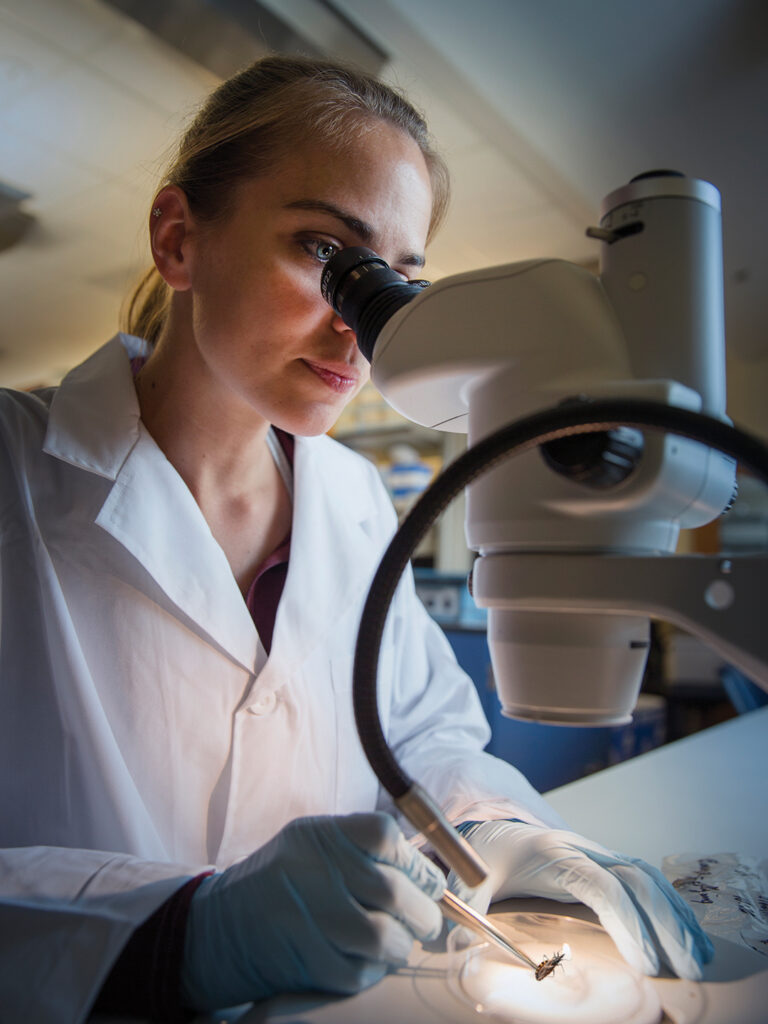Texas A&M VMBS, UT Southwestern Partner To Advance Animal And Human Health
Story by Dorian Martin

With the goal of supporting One Health, Texas A&M University’s School of Veterinary Medicine & Biomedical Sciences (VMBS) has joined forces with the University of Texas Southwestern Medical Center to foster translational research as part of a prestigious program funded through the National Institutes of Health (NIH).
The two institutions are working together on UT Southwestern’s Clinical and Translational Science Award (CTSA), a prestigious five-year grant given to medical schools by the NIH’s National Center for Advancing Translational Sciences (NCATS). The program has made approximately 60 awards to some of the top-ranking medical schools across the United States. UT Southwestern was selected to participate in Spring 2021.
Participating in this respected grant program is an honor the VMBS is incredibly proud of, according to VMBS associate dean for Research & Graduate Studies Dr. Mike Criscitiello.
“The CTSA is consistent with our goals of increasing impactful translational research, better leveraging our patient populations and their spontaneous disease for clinical trials, as well as the growth of our research portfolio through strategic partners in the region,” Criscitiello said.
“As one of the world’s foremost research institutions, UT Southwestern has fostered bold, multidisciplinary research that we are excited to pair with our expertise in veterinary medicine,” he said.
UT Southwestern leaders also are excited about this collaboration, which is a natural extension of the joint work between both institutions’ faculties.
“Texas A&M is a natural partner for the UT Southwestern CTSA program based on many ongoing scientific collaborations between investigators at both institutions,” said Dr. Robert Toto, UT Southwestern Medical Center’s principal investigator and CTSA program director. “The selection of Texas A&M to participate in the UT Southwestern CTSA enriches the hub by bringing scientific expertise not only in basic mechanisms of disease processes common to animals and humans but also for clinical trial design that can translate from animals to humans.”
Expanding Collaboration

The NIH initially created the CTSA program to specifically focus on supporting medical school research. However, the similarities between diseases in human beings and animals provided a natural extension for veterinary school participants in this program.
“We have very unique resources that can contribute to human health. We see pets that have diseases that are similar to people,” said Dr. Jon Levine, professor, Helen McWhorter Chair, and head of VMBS’ Small Animal Clinical Sciences Department. “The belief was that this would be a tremendous win-win.”
CTSA’s initial expansion to include veterinary schools was championed by Dr. Deborah Kochevar ’81, who earned her Doctor of Veterinary Medicine (DVM) degree from Texas A&M and her doctorate in biomedical sciences from UT Southwestern. As dean of the Tufts University Cummings School of Veterinary Medicine, Kochevar worked with NCATS to form the CTSA One Health Alliance (COHA), which created a coalition of veterinary schools participating in CTSAs.
Establishing COHA opened the door for deeper collaborations through the forming of relationships and leveraging the expertise of physicians, research scientists, veterinarians, and other professionals who are studying diseases that are shared by human beings and animals. The alliance is focused on creating animal disease models, clinical trials, clinician/scientist education and training resources, biobanking resources, communication and collaboration, and clinical research jobs and fellowships.
Deepening Relationships And Research
The CTSA partnerships between medical schools and veterinary schools have provided myriad benefits.
“Investigators from both institutions have the opportunity to collaboratively solve problems encountered in translational research processes, including identifying new drug targets for a variety of diseases,” Toto said. “The partnership also can create new research questions that could only be answered by interdisciplinary research teams. Formation of such teams can help investigators successfully compete for extramural funding to pursue answers to important questions in various animal/human diseases.”
Examples of research areas with translational implications include cancer, Chagas disease, bladder dysfunction, orthopedic diseases, and metabolic and neurologic disorders and diseases.

“Veterinary schools allow for researchers to leverage naturally occurring disease models in non-rodent animals alongside human clinical research,” said Dr. Charles Long, a professor in VMBS’ Department of Veterinary Physiology & Pharmacology. “This provides a natural step in translational research, bridging rodent and human research.”
The CTSA program also provides access to researchers who work in different types of labs.
“The CTSA program offers an opportunity to establish new working relationships with people outside of our institution,” Long said. “Certainly, the investigators at UT Southwestern, due to their location, have no access to the resources that the School of Veterinary Medicine & Biomedical Sciences has, especially in terms of large animal models. In that context, the UT Southwestern and the School of Veterinary Medicine & Biomedical Sciences’ collaboration is almost obvious.”
UT Southwestern leaders share a similar perspective.
“For UT Southwestern, access to the veterinary clinical research and biorepositories (facilities that collect and store biological samples for laboratory research) at Texas A&M’s School of Veterinary Medicine & Biomedical Sciences provides needed resources for translational research,” said Dr. Stacy Pritt, associate vice president for research support and regulatory management at UT Southwestern Medical Center. “Our faculty gain the ability to work with A&M’s veterinarians and other researchers to approach research problems holistically and with more diverse animals.”
Expanding Opportunities
Work on the CTSA program began with a pilot grant program, which made its first round of funding awards in fall of 2021.
“These awards really helped those principal investigators elevate their research program,” Levine said. “Moving into the next phase, we are requiring that each project that receives an award have representation at each institution, and there is matching money that comes from the (VMBS) Dean’s Office to enlarge the size of these awards.”

Additionally, a virtual seminar series is now held quarterly; these well-attended presentations feature researchers from both schools whose work focuses on the same subject area.
“We might have a glia scientist from UT Southwestern present alongside a veterinarian scientist here who works in a parallel cancer model,” Levine said. “That’s a good opportunity to share information.”
In the winter of 2023, the partnering institutions hope to have a mini conference.
“We really want to see if we can develop broader connections,” Levine said. “Developing those connections will set us up for the next pilot grant cycle. Hopefully, we can get even stronger applications.”
Discussions also are ongoing about opportunities for students to collaborate with faculty from the partnering institution.
“UT Southwestern students interested in biomedical research may benefit in the future through scientific collaborations and communications with both faculty and students at Texas A&M,” Toto said. “Vice versa, Texas A&M students may benefit from such potential collaborations.”
VMBS administrators are finalizing plans to give interested first-and second-year veterinary students the chance to work in UT Southwestern’s research lab through the Veterinary Medical Scientist Research Training Program (VMSRTP), which is coordinated by Long and Dr. Dana Gaddy.
As part of this 13-week experience, Aggies would move to the Dallas-Fort Worth Metroplex for the summer to work with a mentor from the UT Southwestern faculty. As part of the VMSRTP requirements, students complete a poster, oral presentation, and manuscript that can be submitted for publication based on their research experience.
Both institutions believe these types of efforts will lead to major breakthroughs in the future.
“Such collaborations are vital to future research that could lead to improved prevention, diagnosis, and treatment of disease,” Toto said. “These collaborations also can identify, through basic and clinical investigation, methods for accelerating the discovery of new pharmacologic therapies for human diseases.”
Texas A&M’s representatives agreed, noting the goal of improving One Health.
“Translating basic science advances into clinical intervention can move faster when research teams are nimble in model species,” Criscitiello explained. “This amplifies the scope of impact for all animal health — whether companion animal, wildlife, production animal, or human.”
###
Note: This story originally appeared in the Winter 2023 edition of CVMBS Today.
For more information about the Texas A&M School of Veterinary Medicine & Biomedical Sciences, please visit our website at vetmed.tamu.edu or join us on Facebook, Instagram, and Twitter.
Contact Information: Jennifer Gauntt, Director of VMBS Communications, Texas A&M School of Veterinary Medicine & Biomedical Sciences; jgauntt@cvm.tamu.edu; 979-862-4216


